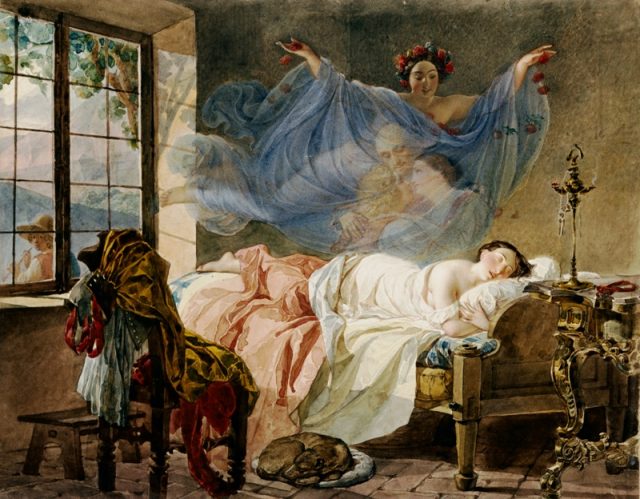According to the National Sleep Foundation, why we dream is still largely a mystery. Some researchers believe that dreams may have a physiological cause.
It’s known that our brains are quite active while we sleep, and dreams may be a side effect of that activity.
Another theory is that dreams are how our brains integrate memories and emotions and do problem-solving — which may be why we sometimes “sleep on it” before we make a decision.

Either way, scientists believe that everyone dreams, whether they remember it or not.
Our dreams can often be vivid and intense, producing overwhelming sensations or feelings.
They can be full of symbols and imagery that only make sense to our unconscious minds.

According to the Dream Studies Portal, there is research linking vivid colors in our dreams to emotional intensity; the more vivid the color of a dream item, the more emotion is attached to the thing that dream item represents.
The thing about dream symbols, though, is that they aren’t absolutes. Because they come from our unconscious mind, they’re shaped by our own sense of what is personally and culturally significant. The pictures we dream are based on what is meaningful to us, personally.

Interestingly enough, though, there are a certain number of individuals who report that they dream in black and white, not color.
The New York Times wrote a brief piece a few years back about a study that addressed this phenomenon.
Results of this 2008 study indicated that the people who were most likely to report dreaming in black and white were those subjects over 55.
Specifically, people in that age range, at that time, who had little access to color television during their childhoods dreamed in black and white about a quarter of the time.

By contrast, the study also noted that among respondents under the age of 25, virtually none reported dreaming in black and white.
It should also be noted that among older respondents who had more access to color television, the likelihood of black and white dreams being reported was much lower.
Dream research conducted in the 1940s indicated that about three-quarters of people studied, across all age groups, reported rarely or never seeing color in their dreams, which is the reverse of the more recent study.

This suggests that television is the critical factor, and that our exposure to television in childhood helped our brains shape how we see our dreams.
If people’s early experience with television was in black and white, they are far more likely to report their dreams being the same. This makes a great deal of sense when taken with the idea of our dream imagery being shaped by cultural significance.
One of the big questions with regard to dream research, in general, is this: Are we researching dreams, or are we really only able to look at people’s memories of their dreams? How reliable are our memories, especially when a) an individual’s memory of a dream can fade very rapidly on waking, or become rapidly muddled and confused, and b) when the details being recalled are relatively insignificant to the overall context of the event being remembered?

Another study on dream recall, also done around 2008, suggested that how often black and white dreams were reported was negatively correlated to overall color recall and awareness in the waking world — people with the best general color recall when awake reported dreaming in color far more often than people whose color recall was less detailed.
A discussion comparing both studies pointed out that those who had good dream recall overall were more likely to report dreaming in color.
While this could suggest that people who reported dreaming in black and white may be less credible reporters, it could also suggest that perhaps the people who report that they dream in black and white are simply more prone to dreaming less intensely.
It’s also very possible that many people just don’t generally notice if a dream object is colored or monochrome, and only after they wake and are asked about it, does their mind go back and try to fill in the blanks.
Read another story from us: Mrs. Muscles! Photos of Vintage Strongwomen
The simple truth is, despite the fact that we all do it, we really still know very little about dreams and dreaming. Our sleeping minds think in a representational manner, and we know human memory is often untrustworthy. So we can say that about 12 percent of people seem to dream in black and white. But all we really know is that we don’t really know.
